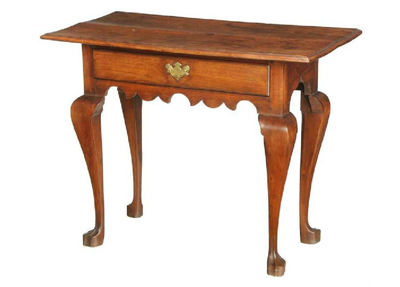
NEW YORK – Anyone familiar with fine English and American furniture knows the name Chippendale. It’s been synonymous with luxury and quality furniture for more than 250 years. The original maker and designer was Thomas Chippendale (British, 1718-1779), a carpenter and self-promoter who published a collection of his designs in 1754 titled The Gentleman and Cabinet-Makers Directory. The book featured templates of his creations and is widely considered the first furniture design book. It was so popular that furniture makers in America as well as England used it and copied his designs. In fact, the name Chippendale is often associated with all mid-18th century furniture.
Chippendale furniture – both English and American – was generally made from solid mahogany wood that was imported from the West Indies. It was a dense, heavy wood with a close grain. Occasionally other woods were used, such as walnut cherry and maple. These were less costly and so were more affordable to the masses who wanted to incorporate the Chippendale designs into their interior spaces. Later reproduction pieces were constructed of younger mahogany, which is less dense and grainier.
American furniture made in the Chippendale style was produced during the Colonial period and was conservative when compared with English designs from the same timeframe. There are elements pulled from the earlier Queen Anne period, but some designs have a Chinese influence as well. The legs of Chippendale pieces typically employed the Queen Anne-style cabriole leg (a curved leg with a ball-and-claw or lion’s paw footing). Cabinetmakers from Newport, Rhode Island, sometimes used classically styled reeded (or fluted) legs. Furniture makers in Philadelphia incorporated Rococo influences, which produced more elaborately carved legs.
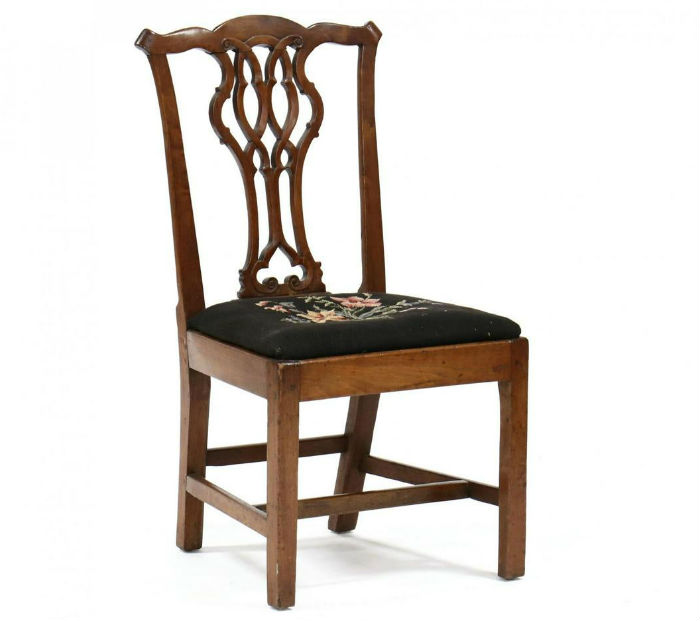
Luke Newbold, a director at Leland Little Auctions in Hillsborough, N.C., said the quality of antique Chippendale pieces is determined by the workmanship of things like the dovetails, joinery and the carvings. “It’s also worthwhile to distinguish between English and American Chippendale,” he added, pointing out, “the American pieces generally have a higher value.”
Newbold said really rare and fine pieces of antique Chippendale continue to bring good prices. “But for good antique pieces that aren’t necessarily super rare,” he said, “reproductions sometimes hold a comparable value. It seems that current consumers value the brand name of contemporary furniture manufacturers they trust to make quality pieces as much as they do having original handmade pieces. We are, however, seeing the resurgence of interest in traditional furniture forms in interior design trends, which will hopefully add to the value of Chippendale furniture in the future.”
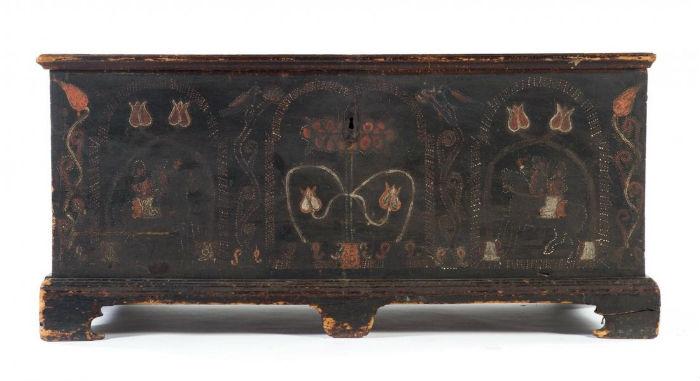
John Nye of Nye & Company Auctioneers in Bloomfield, N.J., said separating the expensive Chippendale wheat from the “ordinary” chaff involves judging each piece by the following four criteria: quality, rarity, condition and provenance. “Though not all equally weighted in determining value, using a score of 10 to grade each aspect raises the potential value the higher and higher,” he said.
Nye said the popularity of Thomas Chippendale’s Rococo aesthetic in late 18th century America was the result of well-heeled Colonists aspiring to demonstrate their wealth, success, knowledge and worldliness by modeling their furniture on contemporaneous English examples. “The renaissance for the design was two-fold,” he explained. “First, the style symbolizes success and stature. Second, the forms harken back to an earlier time – the founding of the new nation – and embody a nostalgia for the success of the Revolution and everything that came with it.”
As for current market demand, Nye said it’s “tremendously depressed” for everything but the finest, rarest and best quality examples of “antique furniture,” which include the 18th, 19th and 20th centuries. “The conundrum presented by the lack of interest runs counter to the current earth-friendly trend of ‘reduce, reuse, recycle,’ in that period furniture was handmade by skilled craftsmen, often constructed of locally sourced materials, and were imbued with such high quality to ensure that they last forever.”
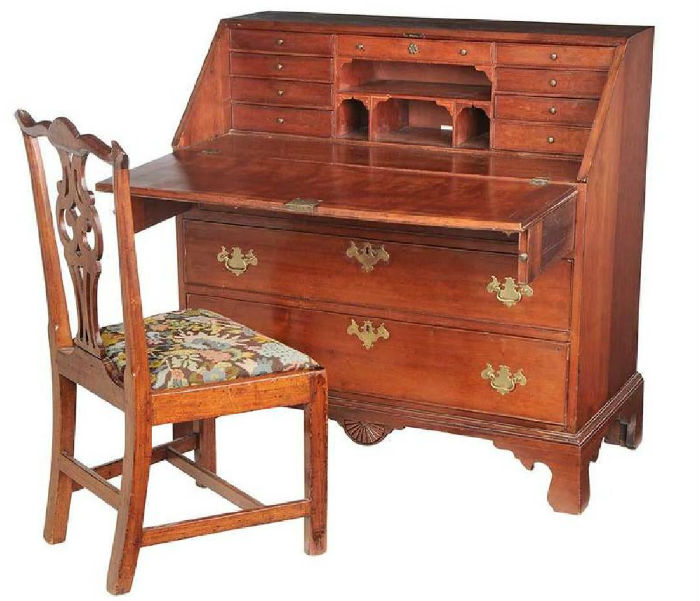
Despite all these socially popular qualities, Nye said, “Chippendale furniture connotes a by-gone, historical era and doesn’t feel fresh and new in the digital age. Until that changes, or until a celebrity publicly embraces antiques, I predict prices will remain low, making it a buyer’s market and offering excellent value for the price.”
Lynda Cain and Andrew Taggart of Freeman’s in Philadelphia remarked that assessing period Chippendale pieces requires a number of factors. “The construction is the most important consideration,” they said. “Dovetailing, mortise and tenon joints, and appropriate glue blocks are just some details to analyze. Surface details are another factor – evaluating whether a piece was refinished or retains an old finish, or judging how carefully the carving was rendered. Finally, the comparison to other known examples provides some sense for relative rarity.”
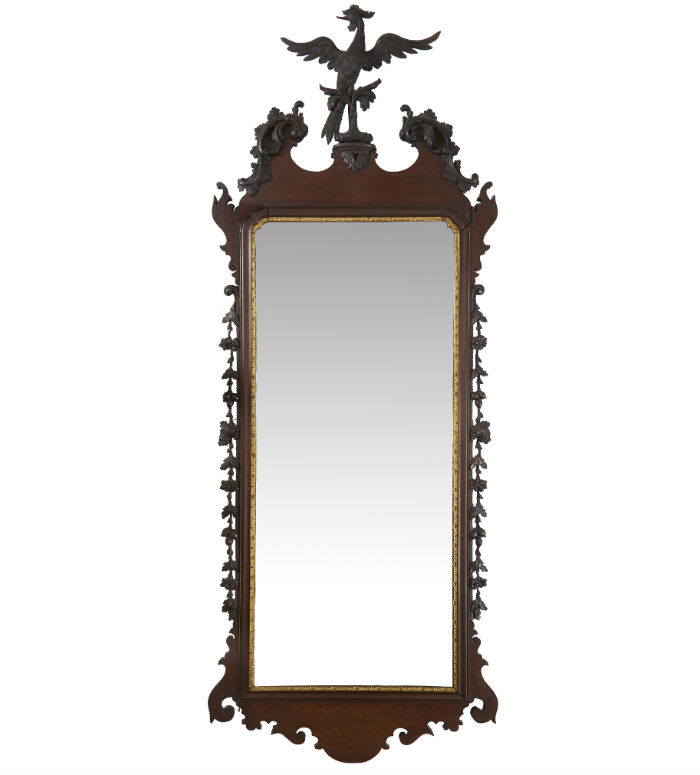
Cain and Taggart explained that during the second half of the 18th century, Colonial tastemakers imported furniture forms from England to stay concurrent with their fashionable English counterparts. “These makers reinterpreted Thomas Chippendale’s designs, producing distinct forms in various regions throughout early America. Chippendale’s legacy survived through the War of Independence, as furniture makers continued to produce pieces inspired by his designs. In the late 19th century, Americans celebrated 100 years of the founding of the United States, and revivals of 18th-century Chippendale furniture once again were popularized as citizens recognized the style as inherently American.”
Cain and Taggart said that while the market for American furniture has shifted; period Chippendale furniture pieces have largely maintained their worth in recent years. “However,” they added, “collectors have become increasingly discerning. Rare examples and forms, with exceptional details, generate the most at auction. Reproduction pieces, while well-constructed, do not draw a great deal of attention at auction. We’ve seen collectors vying for the real thing –period Chippendale is here to stay.”
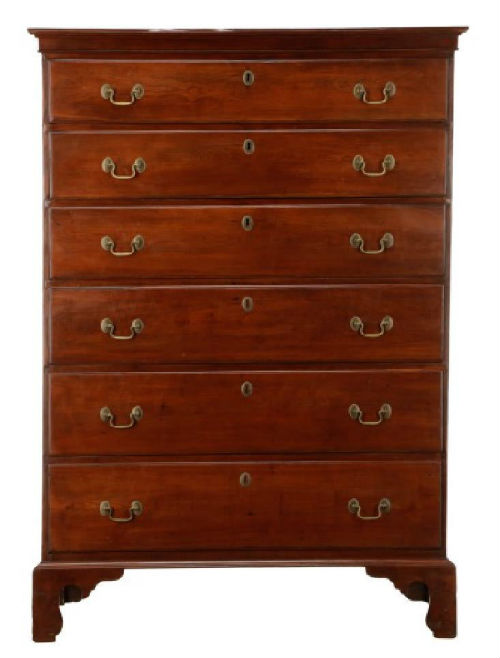
The market is very soft right now for “true antiques,” pointed out Serena Haragin of Gray’s Auctioneers in Cleveland, Ohio. “There will always be those few collectors who have the desire and the wherewithal to buy real period furniture, but most buyers today are not interested in any furniture that is considered old-fashioned. I hope the market turns around as younger generations start to come into the market. I am hopeful that their concern for the environment will influence how they acquire furniture and I hope they will reject the current demand for new ‘stuff’ and rethink the urge to discard their parents’ and grandparents’ ‘stuff.’”


